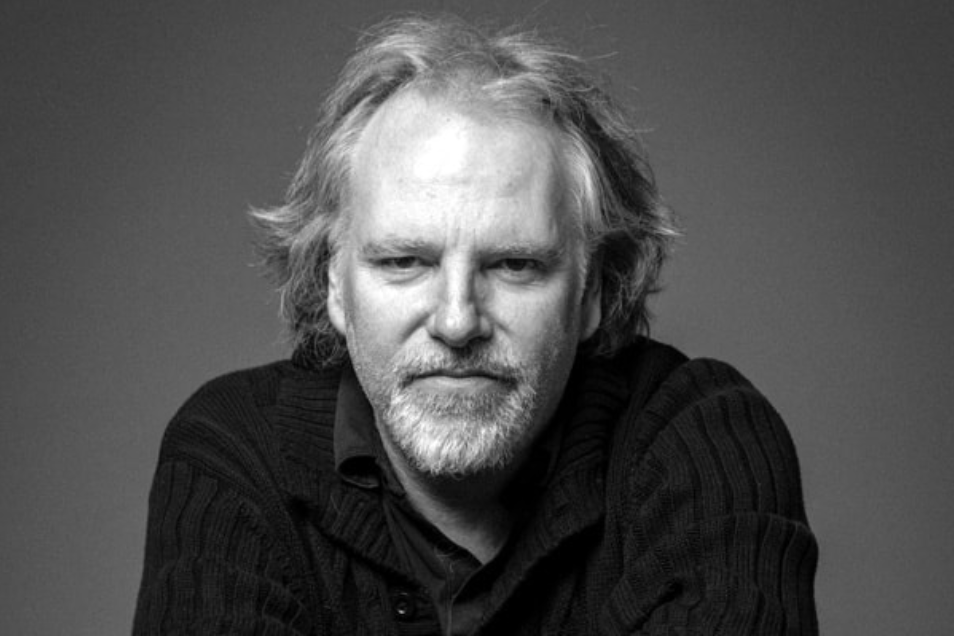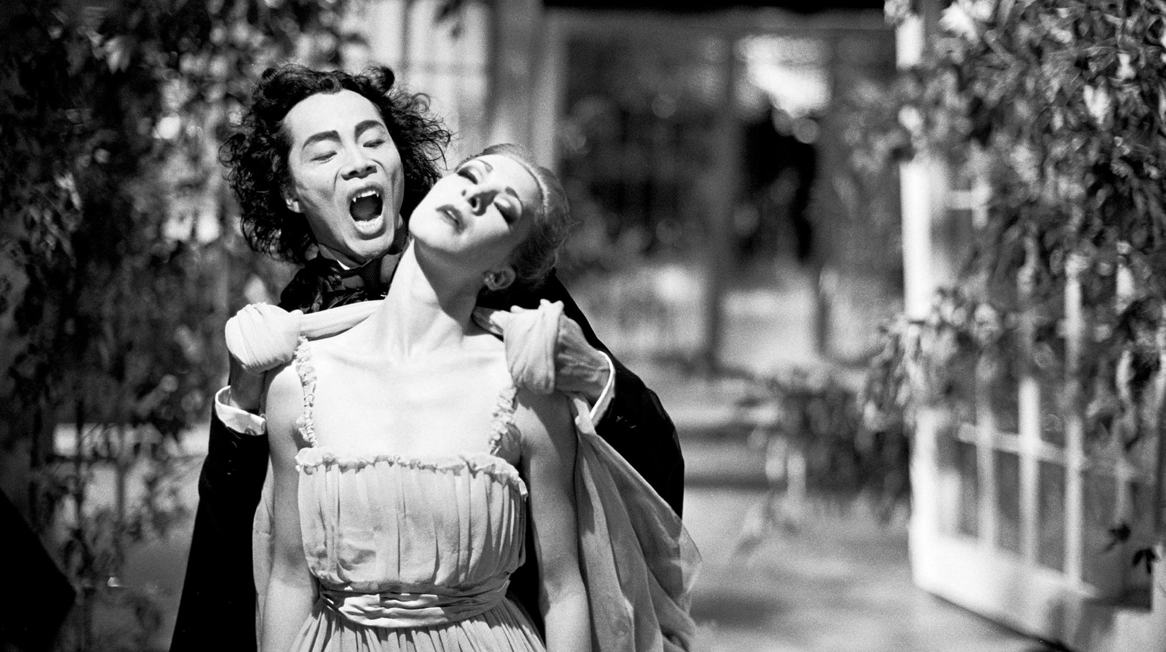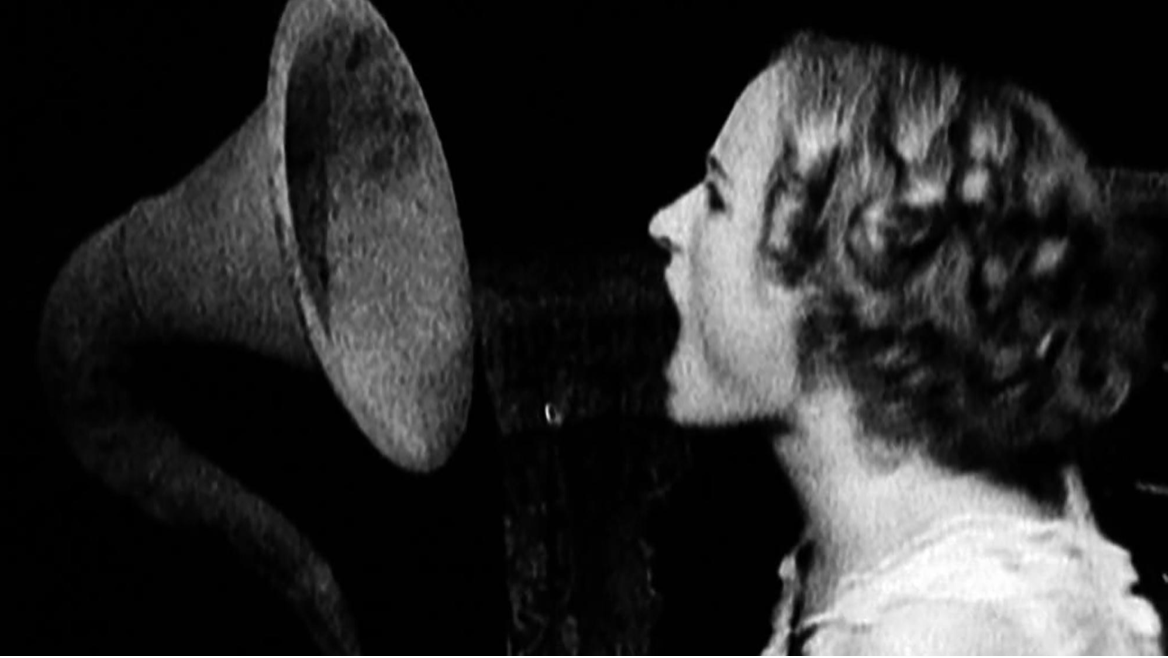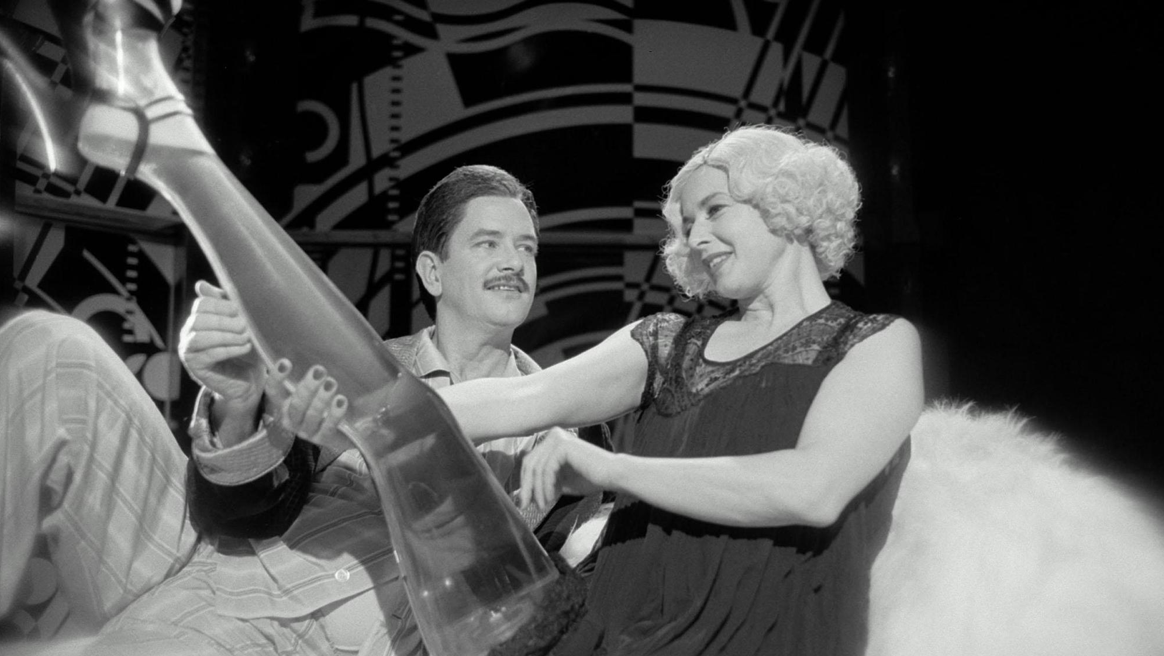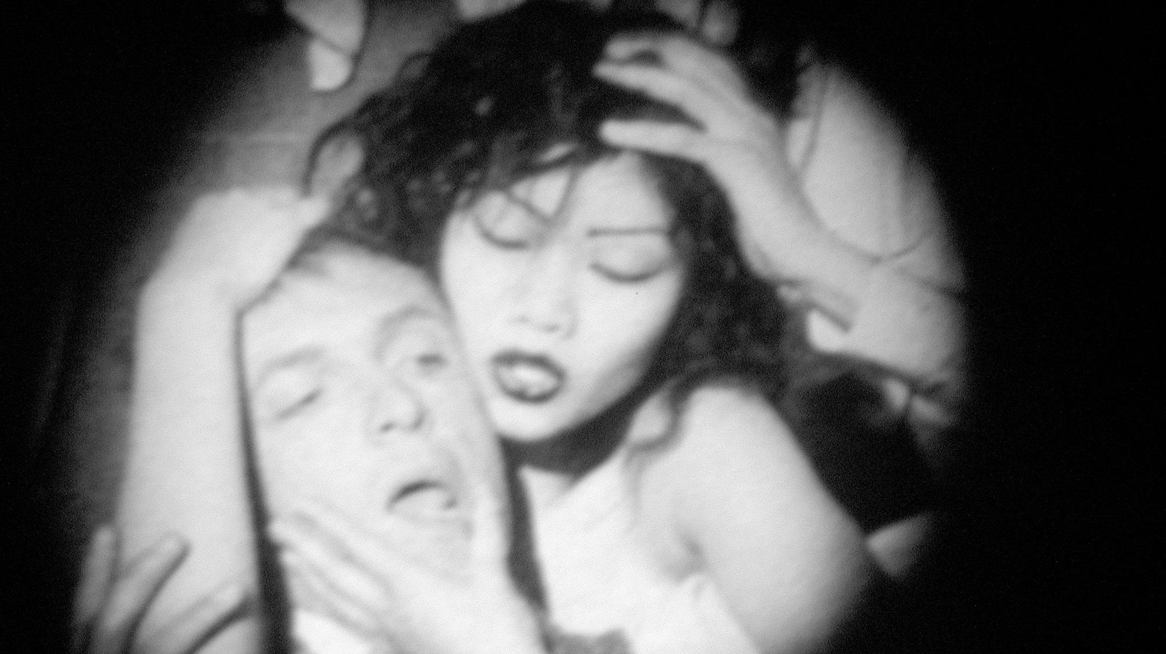In the week since the first part of my interview with Guy Maddin was published, my girlfriend and I have made it our mission to devour nearly every frame of his works that the Cinematheque sees fit to project on its screen. So far, we have seen his early works including his debut short The Dead Father, his B&W features Tales from Gimli Hospital, Archangel, his shift to colour in Careful and Twilight of the Ice Nymphs, plus his revivals of silent film including my personal favourite, Cowards Bend the Knee. As I write this, we look forward to his even more prolific period in the first two decades of the 21st century.
Becoming familiar with the legendary Winnipegger’s oeuvre has generated even more questions that I wish to ask the humble and gracious man whom I was privileged enough to spend an hour with at Honolulu Coffee (888 Nelson St) that crisp winter afternoon.
But time and tide being what they are, my readership and I will have to settle for the second half of my conversation with Guy until the next retrospective comes along (My money is on 2035, the 50th anniversary of his filmmaking debut!).
Dracula: Pages from a Virgin’s Diary (2002)
For the 25th annual Toronto International Film Festival, you produced a short film, The Heart of the World, which was the last work of yours both shot and edited on celluloid film. Can you talk about how the shift from film to digital affected your work going forward?
First of all, (The Heart of the World) is the only film that turned out pretty much exactly like I’d hoped, so that was lucky.
I became obsessed with adapting lost films. The first one was a short I made in 1995 called The Eye Like a Strange Balloon Mounts Toward Infinity. Both of them were adaptations of what I thought were lost Abel Gance movies, the silent film director who made Napoleon. He made a movie called La Roue and I took a plot synopsis for that and turned it into Infinity.
So I just thought (that) if I keep getting short film commissions, I could start this life-long project of mine of adapting lost films as short films. That gave me almost an infinite amount of plot material to tackle and it culminated in me making The Forbidden Room.
Just switching to digital was in the air. I had a Steenbeck editing suite in my apartment, so I was happy to edit there. My best student at the time, a guy named Deco Dawson who has gone on to make a few films that are quite good, I hired him to make a Super 8mm diary of the film (Heart of the World). I liked hiring diarists, mostly written diarists to keep an account. When you’re shooting a movie, you can’t keep a diary (because) you’re too busy, so I’d hire a diarist.
I hired him to be a Super 8 diarist because he was a really good camera operator. The Super 8 footage came back before my 16mm footage did and damn did it look good! So I asked him to use this footage in my movie. While I was shooting my version of Heart of the World, he was shooting his version, so he had to stay out of my way.
He got different angles than I did, he has a better eye. His footage came back three days before mine. So we decided to blow his 8mm stuff up to 16mm and edit it together with my footage. The movie wouldn’t be nearly as good without his footage. It’s like half the movie!
So I owe him a lot of credit for that film. Then it was optically printed to join the two formats together and to trap the dirt in forever so it couldn’t be cleaned out.
You mentioned in the Q&A last night that you had to drive to Saskatchewan to use an optical printer?
I did, yeah. There was no optical printer in Winnipeg, but there was one at the Regina film co-op. So we went there for a weekend and it was painstaking, only one frame at a time! Then someone else blew it up to 35mm. It’s since been restored in 4K. Maybe that’s what played last night for all I know!
Brand Upon the Brain! (2006)
You became more prolific in the 2000s/2010s. I noticed that the Criterion Channel has a ton of your shorts from that period.
Yeah, some of the shorts are not worth watching, but there’s some that were fun. I actually managed to get a lot of features made, sometimes just by being cheap! Cowards Bend at the Knee, a film I’m very proud of, cost just a few thousand dollars.
Brand Upon the Brain! didn’t cost me anything. Someone just paid for it and I don’t think they even did pay for it. I think it went into bankruptcy. Some idealistic fraudster out of Seattle offered me a free movie if I just came and shot in Seattle so I did Brand Upon the Brain! and I got to mount that with a live orchestra, live narration, live singing, and live foley artists. That was really fun. That’s been mounted 70 times all over the world. I never did get a salary, but I got a great movie experience out of it. Watching a movie with live effects is really quite fascinating.
You mentioned last night that the budgets of your earlier work tended to increase with each feature. What was the highest budget you’ve ever had to work with?
In 2003, I made Saddest Music in the World for CDN $3.5 million, which would maybe be like $6-7 million now, I dunno.
Was Mark McKinney that expensive? (laughs)
No, no one was expensive. From what I understand, Mark would’ve done it for nothing! He’s a sweetheart.
But we had to pay Mark the same as Isabella Rossellini (but) I think Isabella didn’t really do it for the money either. She did it to get back into acting. No one got rich (on that movie) everyone else just earned scale.
The Saddest Music in the World (2003)
I’ve noticed that your last few features have been collaborations with Evan and Galen Johnson. Can you describe how that collaboration came about?
When I was making my big lost film project, which culminated in the interactive Seances and The Forbidden Room, I hired Evan who had been a student of mine. He was 18 and is 39 now. I hired him to be a research assistant.
I was finding so much stuff online about lost films that I wanted some help. But I got to know him well and he’s a really good writer and (has) a really good conceptual mind. The projects started to get so much better once he and I were just sitting in a room together every day for long hours researching things and learning about each other. I just took him on as a writing partner.
When it came time to make the project, he was also doing so much more (so) then Galen came in to help. (Then) the three of us were just full-on making the picture. So I just decided to call them co-directors. We each did something different, but they were full-on collaborators.
I knew Evan better than Galen, but I (now) know them both too well. We spend so much time together. There are days where we wanna kill each other being this close all the time, 40 hours a week. We get on each other’s nerves a little bit, but I love them dearly.
Any upcoming projects you’d like to talk about?
No, I’m still in the early stages of things. I not only shouldn’t plug them, but I can’t even talk about them! One of them I have a non-disclosure agreement and the other one….it’ll just jinx it if I talk about it.
I have my fingers crossed, black and blue, for the next two years for a couple of projects to keep me very busy and to maybe get me going again. It’s all about momentum.
The Forbidden Room (2015)
Can you talk more about your work as a teacher?
I think my longtime screenwriting partner and close friend George Toles who’s a prof at the University of Manitoba knew I was broke (so) he got me a job teaching a filmmaking class there in the late 90s. I managed to parlay that into a class that I like a little more, which is film studies; showing movies and talking about them.
I did that for a while and I wasn’t particularly good at it. I have a guilty conscience about paychecks I took there. I wasn’t that good of an instructor. Some students still learned things, but I think they were self-teaching.
U of M was in a budget-cutting mode and they wanted to lower my salary and I got an offer to teach at Harvard instead, so I just went there! There I really did have to teach. Not because Harvard or its students are better, it was just the situation. I couldn’t fake it anymore. So I actually became what I consider an acceptably good instructor.
That gig was up after three years, (so) I went to U of T and started designing classes that I could feel were actually teaching people things. I could feel the students learning.
I really enjoy teaching, but I’d been doing it 25 years before I finally realized “Hey, if you put some effort into this and actually teach people, it’s really rewarding. It’s really wonderful”. So I learned to love it.
I would walk home after teaching, thoroughly spent because it’s a performance. You really make connections with people, it feels really good and it feels exhausting, stuff like that. So I really do enjoy it, but it’s perfect to fill in the gaps between pictures. But they can’t be done simultaneously. You can’t teach during the day and go shoot a movie at night, so I have to take whole years off of teaching, an unpaid leave of absence and hope I can fit a movie into that.
Cowards Bend the Knee (2003)
Any advice for aspiring filmmakers?
I do have some advice. If you don’t wanna end up where I ended up, don’t take this advice. I really like making movies and I would say: just make stuff.
Even if you don’t have the money to rent good cameras, and lights or to hire professionals. Make a movie with your cell phone and just make stuff and keep making it. If no one likes it but you, make another one. You’ll keep discovering stuff about yourself while you’re making things.
You’ll discover the limits of your talent. You’ll surprise yourself by discovering you’re better than you thought at some things. And you’ll discover you’re not so good at other things.
Then you’ll also meet people while making things, getting future collaborators. Nothing will happen if you just make one movie. You gotta keep making them.
So what I see a lot of times is that people will make one movie, and then they’ll spend all their time trying to trick people into watching it. But what you really should do is show it to people, but while you’re doing that, planning your next movie. So just keep making stuff, whether it’s short or long or whatever, just keep making stuff. You’ll discover your voice. That’s my advice.
Celluloid Dreamland: The Cinema of Guy Maddin is currently screening at the Pacific Cinematheque until February 20

